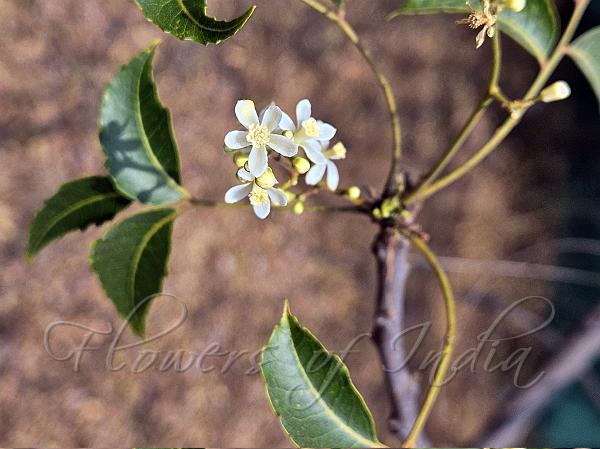|
| Neem |
|

|

| File size | 1128059 |
| Original date | 2/11/25 12:11 PM |
| Resolution | 2048 x 1536 |
| Flash | Flash did not fire |
| Focal length | 5.4mm |
| Exposure time | 1/1645s |
| Aperture | 1.8 |
| Focus Distance | |
| Metering Mode | Spot |
| Camera make | samsung |
| Camera model | Galaxy S23 |
| Sensor type |
|
|
|
|
Photo: |
Botanical name: Azadirachta indica Family: Meliaceae (Neem family)
Synonyms: Melia azadirachta, Antelaea azadirachta
Synonyms: Melia azadirachta, Antelaea azadirachta
Neem is native to India and Burma. It is the state tree of Andhra Pradesh.
Neem is a fast growing tree that can reach a height of 15-20 m, rarely to
35-40 m. It is evergreen but under severe drought it may shed most or
nearly all of its leaves. The fairly dense
crown is roundish or oval and may reach the diameter of 15-20 m in old,
free-standing specimens. The trunk is relatively short, straight and may
reach a diameter of 1.2 m. The bark is hard, fissured or scaly, and
whitish-grey to reddish-brown. The sapwood is greyish-white and the
heartwood reddish when first exposed to the air becoming reddish-brown
after exposure. The alternate, pinnate leaves are 20-40 cm long,
with 20-31 medium to dark green leaflets about 3-8 cm long. The shape of
mature leaflets is more or less asymmetric and their margins are serrated.
The flowers (white and fragrant) are arranged axillary, normally
more-or-less drooping panicles which are up to 25 cm long. The
inflorescences, which branch up to the third degree, bear 150-250 flowers.
An individual flower is 5-6 mm long and 8-11 mm wide.The fruit is a
glabrous olive-like drupe which varies in shape from elongate oval to
nearly roundish, and when ripe are 1.4-2.8 x 1.0-1.5 cm. But Neem is far
more than a tough tree that grows vigorously in difficult sites. Among its
many benefits, the one that is most unusual and immediately practical is
the control of farm and household pests.
| Identification credit: Tabish | Photographed in Hyderabad & Delhi. |
• Is this flower misidentified? If yes,